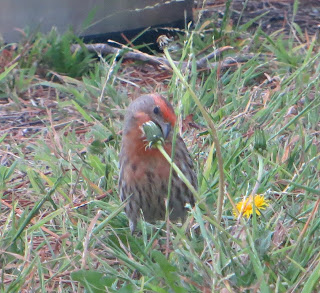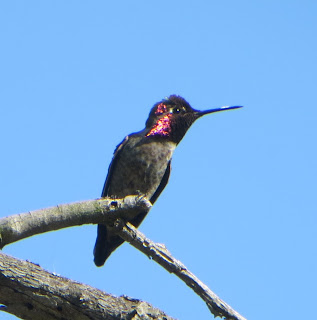On Wednesday, my mom recieved 1500 ladybugs that she ordered over the mail. All of them arrived alive, and my mom and I released them in our aphid-infested backyard Wednesday night. They are still in the yard, and each one has a slightly different spot pattern. Below is a photo I took of two of the ladybugs; one with eleven spots and the other with two very tiny spots.
There are tons of dandelions putting out their seeds in my backyard and the lesser goldfinches and house finches love it. My yard seems to always be full of finches. Below is a male house finch eating the seeds off a dandelion.
 |
| House Finch |
Below is a beautiful male Anna's hummingbird. It only stayed still for about several seconds before chasing after another hummingbird. They've been whistling loudly and racing around every day nonstop.
 |
| Anna's Hummingbird |
The northern mockingbirds have been busily working on building their nests. Below is one of them with a small branch in its beak. I think that they are building their nest in my yard or the yard right next to mine because I often see them fly into the bushes with the twigs. I also believe towhees and bushtits are building nests, because I've been seeing pairs in the same bushes over and over again.
 |
| Northern Mockingbird |